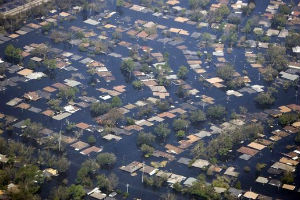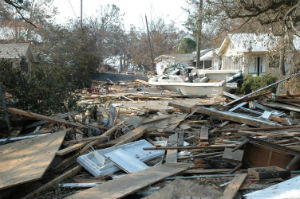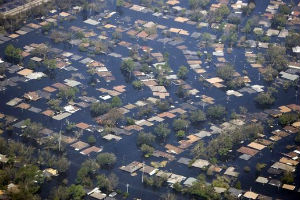Hurricane Katrina: 10 Years Later
Forecasters had warned that Hurricane Katrina would be devastating, but nobody expected it to cause the destruction it left in its wake. On August 29, 2005, Hurricane Katrina had its first impact on the American Gulf Coast. When faced by a natural calamity of this magnitude, the only option for you is to run. Katrina caused expansive destruction from Texas to Florida. The hurricane was noted to have caused property damage amounting to $108 billion.
The Huge Rescue Effort
Undoubtedly, if your property was within Katrina’s path, it was torn apart to the ground. This hurricane is the costliest to have ever hit the U.S. The effort to rescue people and recover property was conducted for months after the storm hit. The process involved saving and then sustaining lives and involved the efforts of approximately 61,000 members of the various U.S. military forces.
All this personnel was required because when Hurricane Katrina hit it hit hard. According to National Hurricane Center Service measurements, the storm had winds of more than 120mph. Some of the infrastructure that was destroyed included:
• Bridges
• Underpasses
• Roads
• Power grids
• Communication grids
These damages forced the rescuers and relief personnel to detour for many miles. Nevertheless, 33,544 people were rescued in this operation. Parts of Mississippi and Louisiana were affected by Katrina thus receiving up to 15 inches of rain.
An Extraordinary Storm
This storm was quite unique, and thus it caused many problems when the rescue efforts were being conducted. It hit a wide area all at once with a great impact. For instance, 70 miles east of where Hurricane Katrina hit land at Mobile Bay, the storm surge reached up to 16 feet. The force winds were ruthless as they passed through Florida Panhandle.
The National Hurricane Center Service states that a typical hurricane is expected to lose force quickly on hitting land. Katrina defied this norm. Tornadoes moved inland accompanied by heavy rains moved inland to areas as far as Georgia. 93,000 square miles of the United Sates were affected significantly. That is an area when comparisons are done as big as the whole of the United Kingdom. The Federal Emergency Management Agency recorded that approximately five million people were cut from the power supply.
The levee system protecting the city of New Orleans was not good enough to avert the destructions of Hurricane Katrina. Army Corps of Engineers officials at a U.S. Senate hearing confirmed that 55 levees were breached while many others were overtopped during the storm surge.
First Hand Experience of the Storm by New Orleans Residents
When Hurricane Katrina struck, 80 percent of the New Orleans population was evacuated. Nonetheless, some 50,000 to 60,000 people decided to stick around taking refuge in the “last-chance” shelters. Due to the failure of the levee system, 80 percent of the city was flooded. If you had taken refuge in the Superdome, you and the other 26,000 people in the refuge at this point were surrounded by water.
The strong winds destroyed the windows with many buildings most notably being the Hyatt Hotel in downtown New Orleans. The hurricane was unforgiving to all with the Mississippi coast also being destructed. Pass Christian, a town along the Gulf Coast, was extensively destroyed by Katrina. According to Jacksonville.com more than 80 percent of structures in the town were entirely destroyed or rendered uninhabitable.
Rescue Strategies
As soon as the conditions were conducive, the United States National Guard and Coast Guard personnel moved in to help with the damage control attempts. They used the airport in Mobile as their base for flying missions using choppers. People on their homes’ rooftops and flooded streets were rescued by the personnel. Though the National Guards tried to move into the city as soon as possible, flooded roads and fallen trees slowed their progress.
It was reported that after the hurricane effects had subsided, the crime rate increased in New Orleans. Some of the main criminal activities reported include:
• Rape
• Looting
• Murder
• Carjacking
Nonetheless, after further investigation it was evident that some crime reports were exaggerated. But the city was in chaos and disorder.
Return to Normalcy
After the combined effort of the many United States Forces, the search and rescue efforts were concluded. People started returning to the city trying to salvage what was left of their lives. The government provided funds and personnel to help in the rebuilding of the affected areas mostly New Orleans.
Through Hurricane Katrina, the U.S. learned a harsh lesson and up-to-date, the reconstructions of bigger and stronger levees along the Gulf Coast are still in progress. The Federal Emergency Management Agency has also upgraded its tactics on how to respond to emergencies.







